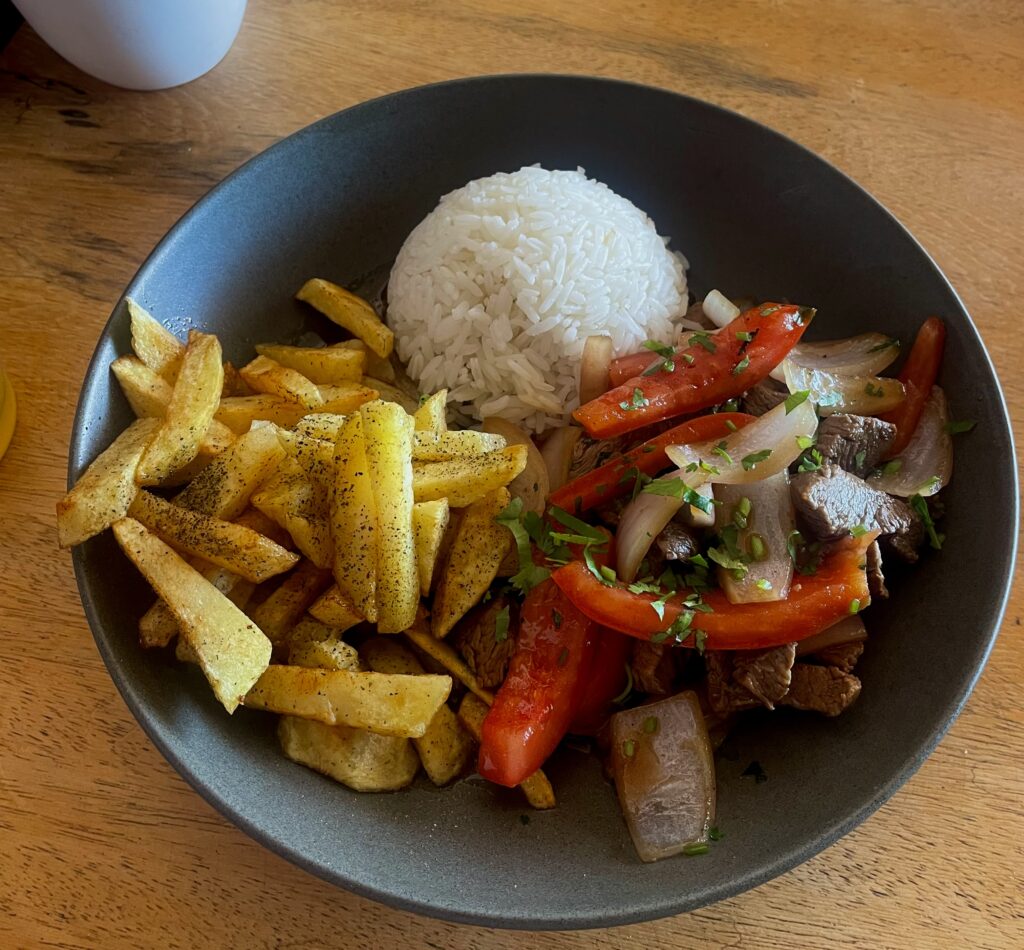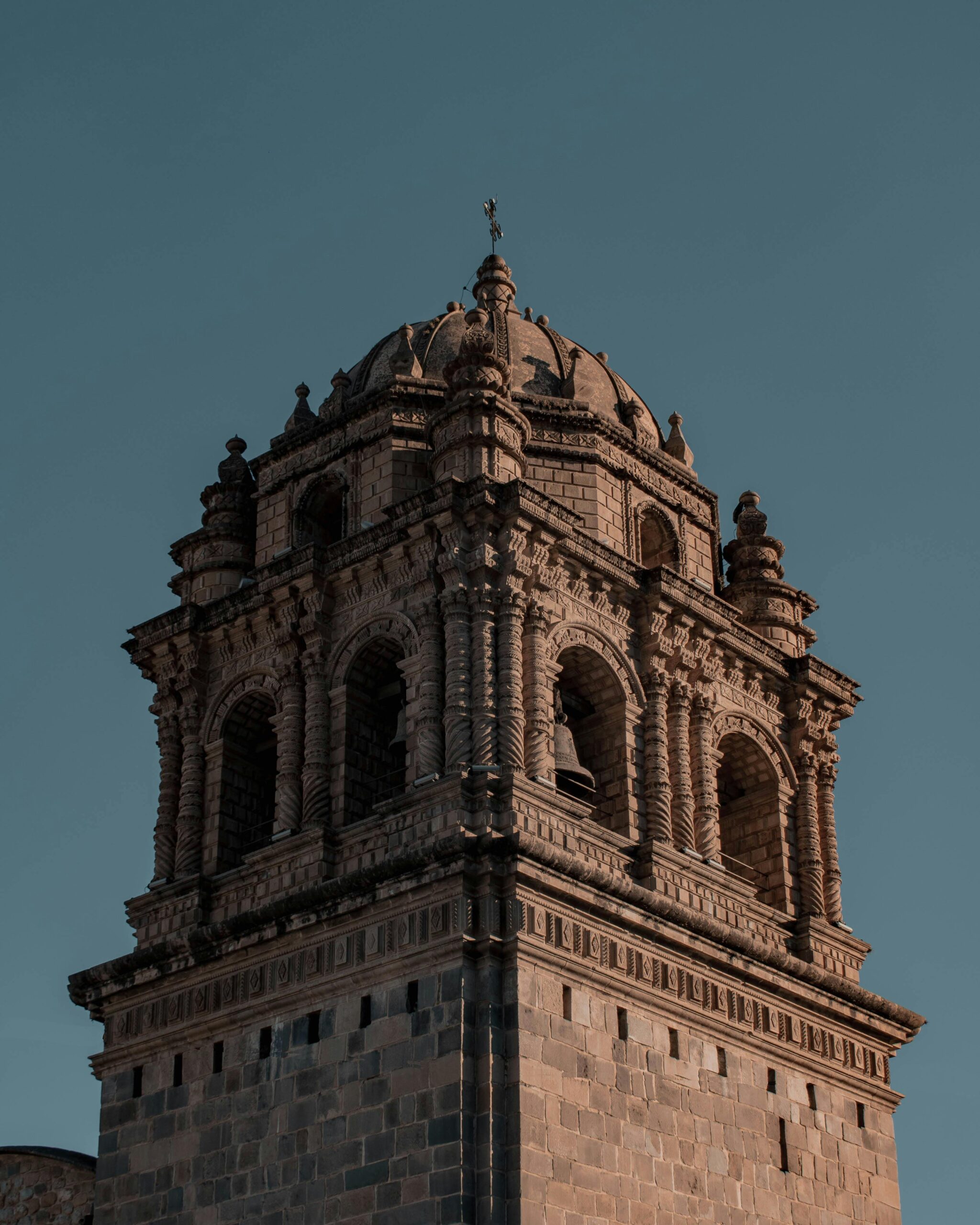Latin America was largely colonized by the Spanish from 1531 onwards, though the British and Portuguese also left a significant cultural imprint, whether in lifestyle habits, food, or the national language.
Geographically, Peru boasts a very diverse landscape, stretching from the sea to stunning mountain peaks that reach very high altitudes. This diversity is also reflected in the local cuisine: from fresh ceviche along the coast to highland meats like llama.
One dish that precedes its reputation, but is reserved by locals for very special occasions, is cuy, or guinea pig. But don’t worry: Peruvian cuisine also features plenty of chicken, hen, and beef.
Las bebidas peruanas
Pisco
While visiting Peru, don’t miss the chance to try the delicious Pisco Sour, the country’s iconic and internationally known cocktail. Originally Peruvian (yes, we insist!), pisco remains a point of contention with neighboring Chile, but it was indeed invented in the northern city of Pisco. Want to try the original recipe? Check out our article on Pisco Sour!
You’ll find it everywhere in Peru, and it guarantees memorable evenings. Still, be cautious—Peruvians pour stronger drinks! It’s often advised not to have more than two piscos at high altitude. More than that… watch out! Will you be a Pollo or a Jarra?
Fun fact: In 2003, a group of Pisco advocates in Peru tried to register the city of Pisco as the national territory of the drink with UNESCO, but Chile beat them to it. The two countries have been battling for Pisco’s recognition ever since.
Inca Kola
The people’s drink is none other than Inca Kola, a fizzy soft drink that’s a staple in Peru. It originated from an ancestral preparation made with a local plant: lemon verbena (Aloysia citrodora), known in Spanish as Hierba Luisa. Inca Kola remains the best-selling beverage in Peru to this day.
Chicha
You may have seen along the roadside tall poles topped with reddish plastic bags. These signal the sale of the famous Chicha to locals.
Chicha is a traditional fermented drink made from corn and grains. It was originally created to refresh laborers. According to the Cayetano Heredia University, chicha helps reduce inflammation, improve blood circulation, and limit fat accumulation due to its anthocyanin content. It embodies the Andean communal spirit, and its recipe is passed down through generations, along with its cultural significance.
Chicha stands out for its high nutritional value and also its religious role. It’s customary to offer a portion to the earth at the start of ceremonies to honor the Mother Earth, or “Pachamama.”
Many restaurants offer a daily drink with their menu, often chicha morada, made from purple corn.
Mate
The term mate is commonly used to describe a hot beverage similar to tea. In Peru, the most common infusions are:
Muña mate: known for easing stomach issues and aiding digestion
Chamomile mate: helps promote restful sleep
Coca mate: made from coca leaves, known for energizing effects and easing altitude sickness
Quaker
In the early morning on Peruvian streets, you’ll find stalls offering small avocado sandwiches and the famous quinoa quaker. This hot drink was originally consumed by people heading to the fields, it’s hearty and perfect for long workdays.
Often served in a plastic bag with a straw, it’s the perfect to-go beverage for workers on their commute.
Typical Peruvian Dishes
Ceviche
A true emblem of Peru, this delicious dish is made from four key ingredients: white fish, chili pepper, salt, and lime juice. The chili and citrus acidity “cook” the fish perfectly.
In 2004, ceviche was declared part of Peru’s national cultural heritage. In ancient times, it was marinated with chicha and hot peppers.
Today, you’ll find countless versions to satisfy every palate:
Arequipa Ceviche: made with shrimp, one of the most renowned types in Peru
Amazonian Ceviche: uses river fish instead of sea fish, served with plantains and tropical fruits
Piura Ceviche: from northern Peru, made with dried fish
And don’t worry, there are vegetarian and fish-free ceviche options too!
Causa Rellena
One of Lima’s culinary trademarks, causa rellena is made from mashed potato, chili, egg, and black olives. It can be stuffed with avocado, lettuce, tuna, trout, chicken, or seafood, all topped with mayonnaise.
Originally sold at Lima’s port and in its streets, proceeds from this dish helped fund the war for independence.
Ají de Gallina
This traditional dish comes from Lima. It’s made with shredded chicken in a creamy sauce of ají amarillo (Peruvian yellow chili). Over time, it has evolved into a dish that reflects Peru’s cultural fusion: the chili from the Andes and the bread and poultry introduced by the Spanish.
Arroz Chaufa
A type of Peruvian fried rice heavily inspired by Cantonese-style rice. It’s part of chifa cuisine, a fusion of Chinese and Peruvian ingredients. The word chifa comes from the Cantonese phrase chi fan (meaning “eat rice”). It originated in the 19th century with the arrival of Chinese immigrants who adapted their recipes using local products.
Lomo Saltado
A true Peruvian classic, lomo saltado is also a symbol of the fusion between Chinese and Peruvian cuisine. This beef stir-fry—usually with tomatoes, peppers, and onions—is served with rice and French fries and is a favorite among Peruvians. You can also find tallarín saltado, a variation that combines lomo saltado with noodles in huancaína sauce.

Cuy
Better known as guinea pig, cuy is a cherished dish in the Cusco region, especially in the Sacred Valley. There are various ways to prepare it:
Cuy chactado: fried flat under a hot stone for a crispy result
Oven-roasted cuy: baked and often stuffed with aromatic herbs
Its taste is often compared to rabbit or duck. It is served whole, which may surprise some visitors.
Seen as a sacred dish, cuy holds spiritual significance and was once used in Inca rituals.
Pollo a la Brasa
Also called rotisserie or grilled chicken, this dish features marinated chicken slow-cooked over coals or in rotisserie ovens until the skin is crispy and the meat tender.
It’s so popular in Peru that it has its own holiday: “Día del Pollo a la Brasa” is celebrated every third Sunday in July. Chicken is the most consumed meat in Peru, with over 43 kg per person annually.
Pachamanca
Originating from the Andean highlands, especially Ayacucho, Huancavelica, Cusco, Junín, and Apurímac, pachamanca is an act of gratitude to Mother Earth. It symbolizes community unity, fertility, and the sacred bond with nature.
More than just a dish, pachamanca is an ancient ritual practiced since pre-Inca times. The name means “earth oven” in Quechua (pacha = earth, manca = pot or cooking).
It consists of cooking meat, vegetables, and tubers using hot stones buried in the ground, forming a natural oven.
Chicharrones de Chancho
Chicharrones de chancho are chunks of pork fried until crispy on the outside and tender inside. They’re especially popular in the Andean regions of Cusco, Ayacucho, and Arequipa, often enjoyed in the morning or during local festivals.
This dish is a symbol of rustic, celebratory cooking, still widely available in local markets and picanterías.
Papa a la Huancaína
This cold starter is one of our favorites! It consists of boiled potatoes topped with a creamy and slightly spicy sauce made from cheese, ají amarillo (yellow chili), and milk.
Originally from Huancayo in the central Andes, this dish is now enjoyed nationwide, particularly along the coast and in Lima. One theory says women from Huancayo sold it to workers building the railway between Lima and Huancayo.
If you’re traveling to Peru, we highly recommend sampling the many dishes the country has to offer. Each city has its own specialties, which you can discover through gastronomic tours in Cusco or Lima.
Peru is also a hub of culinary crossovers, giving birth to a fusion cuisine that’s as delicious as it is surprising. Don’t miss our article on the best restaurants in Cusco, we’ve selected our top picks to delight your taste buds and help you explore Peruvian flavors.
And if you’re vegetarian, don’t worry—we’ve got you covered too: check out our list of the best vegetarian restaurants in Cusco.




